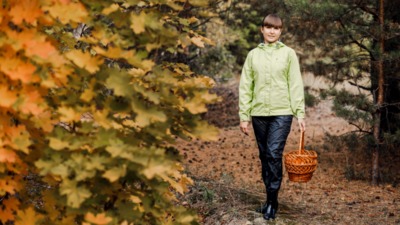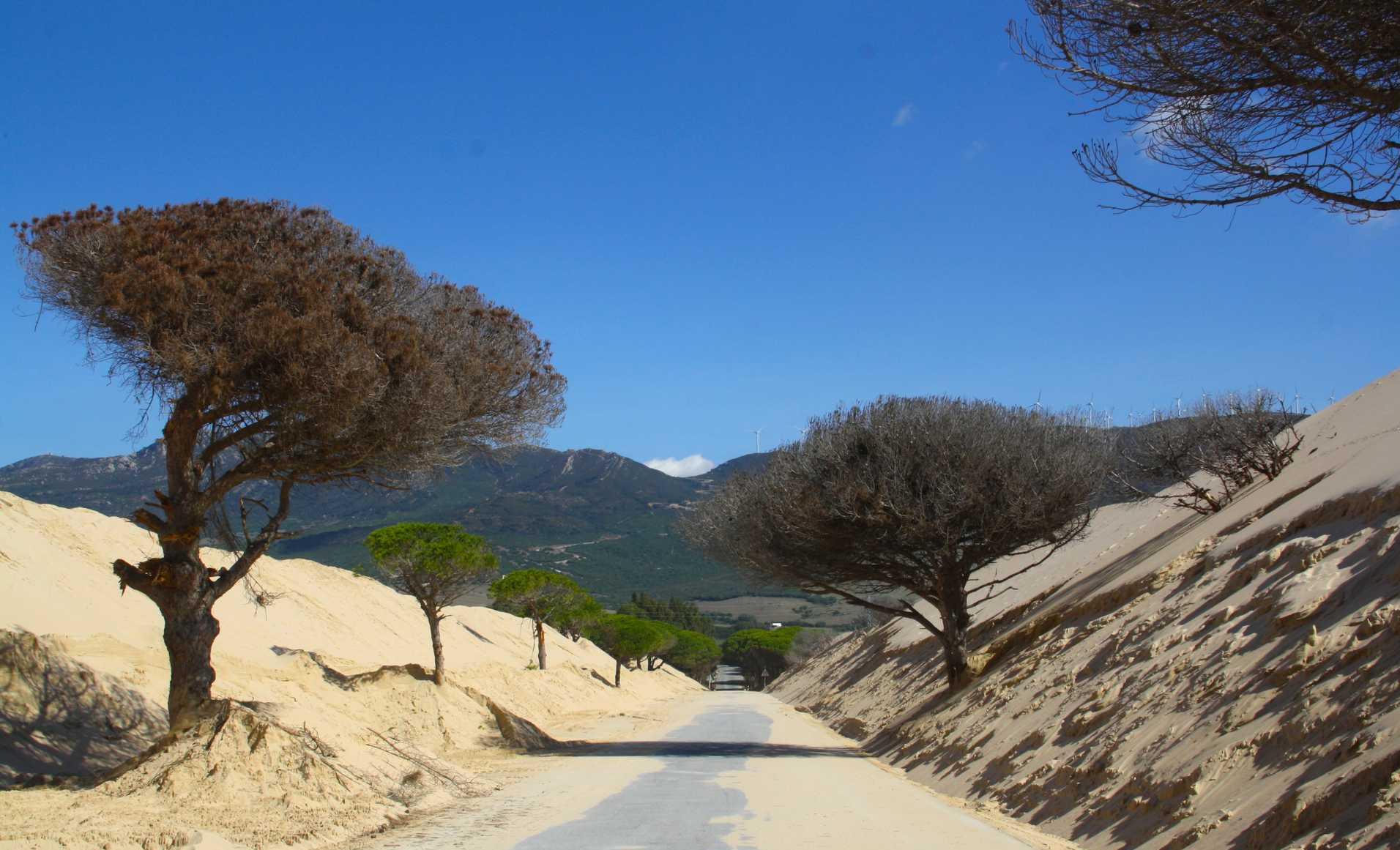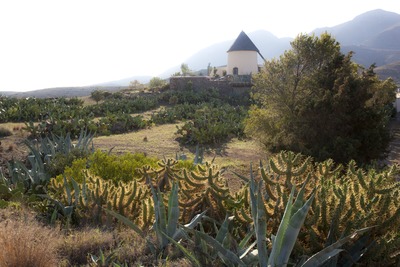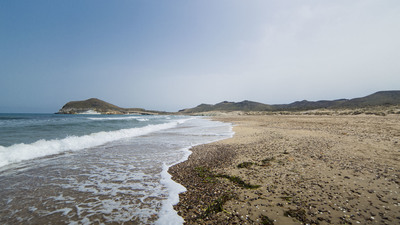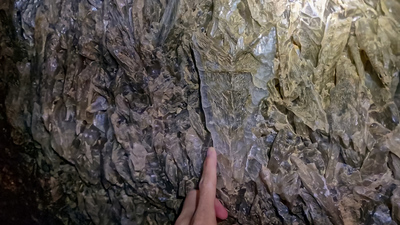Manolo Escobar Almería's best ambassador

Gentlemanly and cheerful, full of charm and simplicity, he conquered the heart of all the generations of his time, crossing frontiers to the rhythm of Spanish music, the copla, the pasodoble the rumba...
Manolo Escobar (Las Norias de Daza, El Ejido, 1931-Benidorm, 2013)
Ambassador of the "copla" or traditional four-line verse
He was born as Manuel García Escobar on 19 October 1931 in the town of Las Norias de Daza, in the district of El Ejido (Almería), the fifth of the 10 children of Antonio García and María del Carmen Escobar, to whom he dedicated his famous song Madrecita María del Carmen.
In the years following the civil war Escobar initiated his musical training at home within the family, after his father met a retired Republican teacher and offered him a home in exchange for becoming his son's private music teacher. Manolostarted out playing the lute and also began to play the piano. He formed a troupe together with his brothers Baldomero and Salvador and they began to perform at weddings and other events.

Seven years before becoming of age (21), he moved with his brothers to Barcelona. He was attracted by the world of show business, which he learned about in venues in Badalona and China Town in Barcelona.
Success did not take long to arrive. There were more and more shows and the Escobar sound started to be recognised: song, rumba, pasodoble, bolero, ranchera, fandango…
During his film career he appeared in 19 films, three of which are in the top 10 most seen films premiered in Spain. That is nothing compared to his musical career, with almost 80 records, 24 of them gold discs, although sales should really make this over 40. The best-selling album was Y Viva España. It originally sold six million copies (10 if you include later official editions). It was the best-selling record in the history of Spanish music from 1973 to 1992.
Memories of childhood
Even though Manolo Escobar left El Ejido as a teenager to go to Barcelona, he always maintained strong connections with his birthplace. He confirmed when in 2013, just before his death, he was appointed an Honorary Citizen of the town, and a park was named after him in the district where he was born, Las Norias de Daza.
Escobar remembered his childhood spent in the guest house that his parents ran and his adventures in the area surrounding El Ejido before the area took off economically thanks to the intensive agriculture that has made it the vegetable garden of Europe.
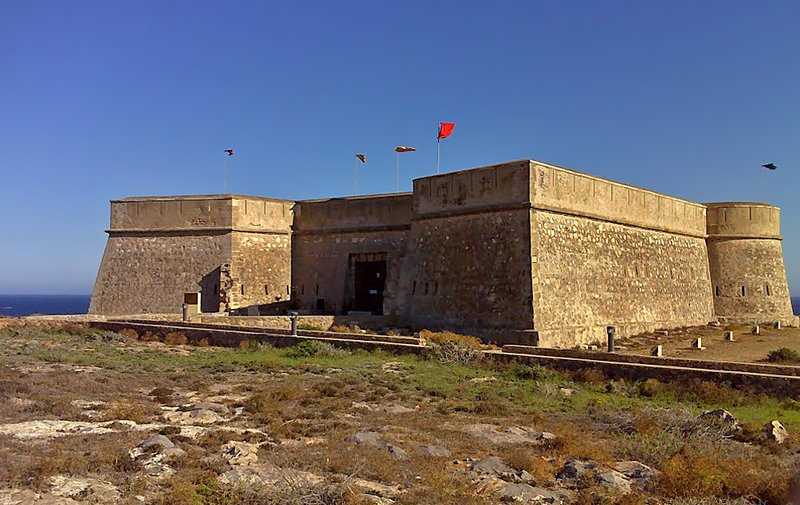
As well as the vast stretches of sand on the beaches of Almerimar, Balerma, San Miguel and Guardias Viejas, the singer remembered his visits to the Guardias Viejas Castle, a fortress whose construction began in 1769, next to the sea, although it was destroyed by the English during the War of Independence and rebuilt in 1817. It has now been refurbished and houses a permanent exhibition of military uniforms, armaments from this time and models of coastal fortifications.
Punta Entina Sabinar
The Beauty Spot and the Punta Entina Sabinar Nature Reserve are home to some of the best preserved dunes in mainland Spain, as well as kilometres of fine sand on the beautiful unspoiled beach.
It extends from Playa de Cerrillos to the beach of Levante Almerimar. It includes the beaches of El Príncipe or Sabinar and Entinas.
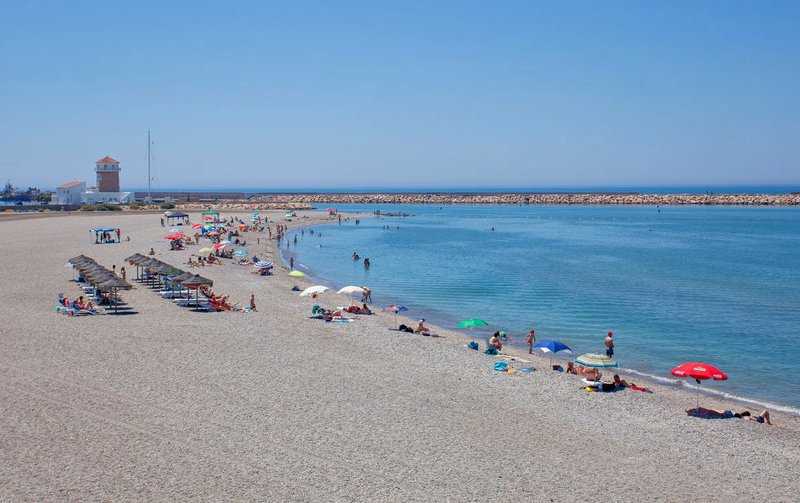
If you follow the pathway through the Cerrillo Salt Pans you will see areas liable to flooding in the form small ponds, marshes and salt pans, where a great variety of bird life can be observed, such as the elegant grey heron, which remains completely still waiting to spear an unsuspecting fish with its long beak; and the spoonbill, which gets its name from the shape of its enormous beak.
Near to this natural area you'll find the town of El Ejido where you can visit the Fortified Tower of Balerma and El Daymún, which is the mausoleum of a Spanish-Roman family that dates approximately from the end of the 3rd century. You can also visit the archaeological remains of Ciavieja, a settlement in the Roman municipal district of Murgi which contains remains of the civilizations that have inhabited this area since three thousand years before Christ.
Agricultural tourism
Naturally produced vegetables have left their mark on the landscape of El Ejido. The greenhouses of El Ejido are the only human construction which Pedro Duque, the Spanish astronaut, could see with the naked eye from the Discovery. "They are so visible because the plastic reflects the light”, said Duque. The beauty of these structures is on the inside, since under plastic is where you'll be able to appreciate the work of our farmers who take advantage of nature to grow delicious vegetables.
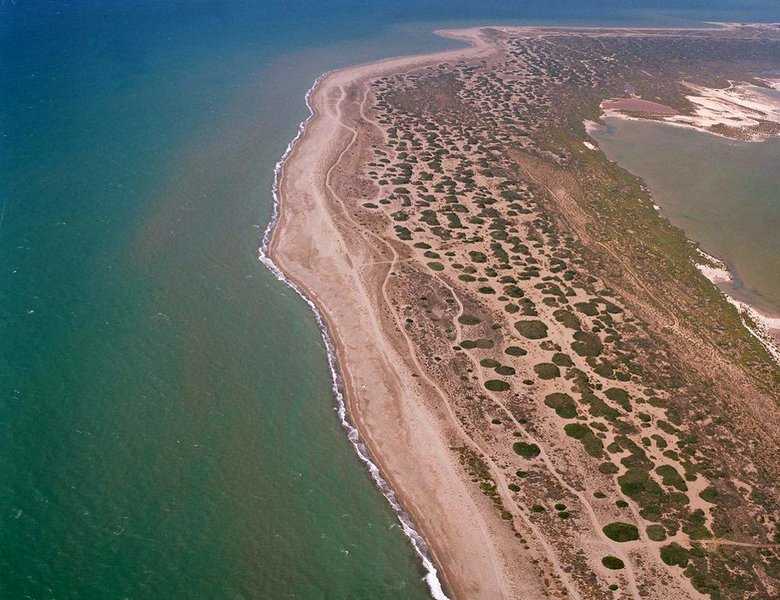
More than 14,000 hectares under production, with a property system that speaks of a distributive economy with over 8000 owners. Some companies organise agricultural tourism routes so you can discover the so-called garden of Europe first hand.

